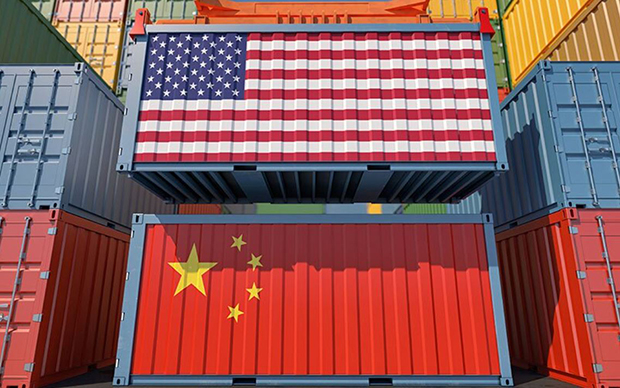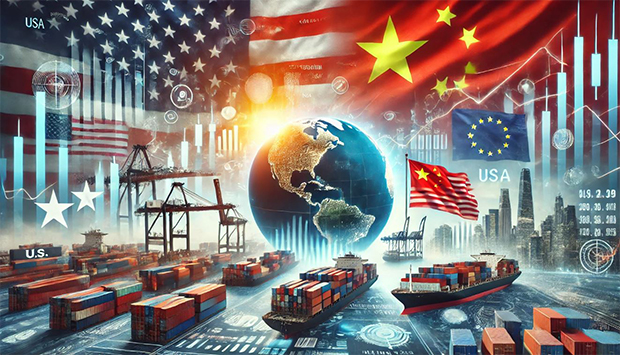- The Return of Trump: What It Means for Global Trade
- Trump’s Trade Wars: Implications for China, Allies, and Markets
- Navigating the Impact of a Second Trump Presidency on Global Commerce
- America First Revisited: The Economic and Trade Consequences of Trump’s Second Term

Business News, 12 November 2024: With Donald Trump’s return to the White House, the global trade landscape could face significant shifts. His first term was marked by tariffs, trade wars, and an “America First” approach, and a second term may revive and intensify these policies. This article examines the potential impacts of Trump’s renewed presidency on global trade, focusing on relations with China, trade practices with U.S. allies, and the broader economic consequences for businesses and consumers.
The “America First” Doctrine and Its Revival
Trump’s “America First” doctrine prioritizes U.S. manufacturing, reducing dependence on foreign imports, and protecting American jobs. However, this protectionist approach often conflicts with the realities of a globalized economy. In his first term, Trump imposed tariffs on Chinese goods totaling $250 billion, triggering retaliatory tariffs and a trade war that disrupted global supply chains, raised prices, and dented investor confidence.
The trade tensions with China reverberated across various industries, including technology and agriculture, as companies faced higher costs and more complicated logistics. Some U.S. firms shifted production away from China, but the disruptions also led to higher prices for consumers, particularly on electronics, machinery, and food products.

Renewed Tensions with China
Under a second Trump administration, the U.S. is likely to adopt an even more aggressive stance toward China. Trump has suggested imposing tariffs as high as 60% on Chinese imports and revoking China’s most-favored-nation status. These actions could make Chinese products too expensive for U.S. consumers and prompt retaliatory tariffs from China on American goods, particularly in sectors such as electronics, automotive, and agriculture.
These policies could accelerate the “China+1” strategy, where businesses diversify their supply chains by sourcing from multiple countries to reduce dependence on China. While this could help mitigate risks, it may also lead to higher costs as companies seek alternative suppliers or regions to relocate production.

Strained Relations with Traditional Allies
Trump’s approach to trade is not limited to China. In his first term, he introduced tariffs on imports from traditional allies like the European Union and Canada, often citing national security concerns. He also imposed tariffs on steel and aluminum, disrupting global manufacturing industries. A second term could see the expansion of tariffs on allied nations, which might strain diplomatic relations and drive these countries to seek alternative trade partnerships, particularly with non-U.S. markets.
This tension could disrupt established supply chains and force companies in the U.S. and its allies to adapt quickly to a shifting global trade environment. Europe and Canada may explore new trade deals with other regions, potentially undermining the U.S.’s influence on the global economic stage.
Impact on Global Markets and Investor Sentiment
The prospect of escalating trade tensions during a second Trump term could inject volatility into global markets. Throughout Trump’s first term, financial markets reacted strongly to trade announcements, with equities and currencies fluctuating based on new tariffs or negotiations. If trade wars intensify, investors may become more cautious, seeking defensive strategies that could slow global economic growth.
The uncertainty surrounding potential tariff increases, trade wars, and the broader economic impact could create a challenging environment for investors. While some sectors could benefit from protectionist policies, others may face supply chain disruptions or increased production costs, leading to higher consumer prices and reduced demand.
The Road Ahead: Potential Adjustments and Adaptations
Global businesses will likely need to quickly adjust to any new tariffs or trade restrictions. Some may relocate production facilities, while others could pass increased costs onto consumers. Businesses might also explore new trade routes to bypass U.S.-China tensions, focusing on markets in Southeast Asia, Latin America, or other emerging economies less affected by Trump’s policies.
Firms with international supply chains could look to diversify their sourcing strategies to reduce dependence on volatile markets like China. While this could offer long-term stability, it may involve short-term disruptions, such as higher transportation costs, supply chain inefficiencies, and increased labor expenses.
Conclusion
As Trump’s trade policies evolve during a second presidency, businesses and global economies must prepare for potential upheaval. While the administration’s focus on U.S. manufacturing could have positive effects domestically, the broader global consequences—such as strained relations with allies, disruptions to international supply chains, and rising costs for consumers—could create challenges. Countries and companies alike will need to adapt their strategies to navigate a more unpredictable global trade environment and minimize the disruptions caused by aggressive U.S. trade policies, particularly those targeting China.
While these challenges will certainly arise, there may also be opportunities for businesses that can successfully pivot and find new ways to mitigate risks, diversify their supply chains, and explore new markets to offset the impact of these policies.





